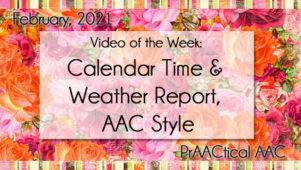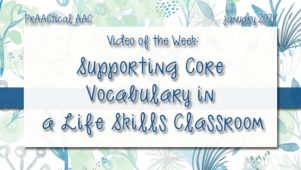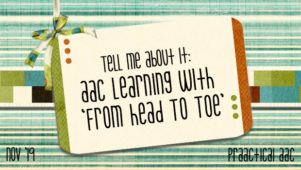Conversations in the Classroom with Tina Moreno
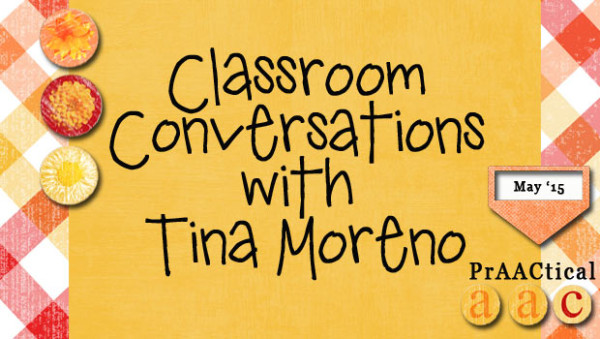
 Better Hearing and Speech Month continues with guest blogger Tina Moreno. In this post, Tina shares some thoughts on building
Better Hearing and Speech Month continues with guest blogger Tina Moreno. In this post, Tina shares some thoughts on building  meaningful conversations in the classroom. She also made her visual support materials available for downloading (link at the end of her post).
meaningful conversations in the classroom. She also made her visual support materials available for downloading (link at the end of her post).
You can read Tina’s previous post for BHSM here.
CONVERSATIONS IN THE CLASSROOM
Fostering opportunities for meaningful conversation is critical throughout the school setting. Great discussions can happen in the classroom, but it can prove challenging for students to remain on topic, take conversational turns and give their peers wait time. In order to help students acquire these skills, we need to provide direct instruction, modeling by adults (and typically developing peers whenever possible!) and visual supports.
Aim for the conversation target
It can be difficult for students to keep track of the conversation target, especially in large group, fast-paced settings. It can be especially challenging for students who use AAC to communicate because it takes extra time to formulate a message. To remind students of the topic at hand, we can use a target as a visual support (see sample). As students take turns to make comments, ask questions and participate in the conversation, symbols can be placed on a target to provide feedback on whether they are remaining on the topic of conversation. Be sure to give everyone a chance to choose a topic!
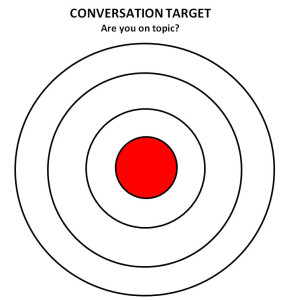
Taking conversational turns
Children need to learn that good conversations are balanced with everyone participating and with a mix of questions and comments. Conversation playing cards (see sample) can be utilized to help children visualize conversational turn taking and practice including everyone in the discussion. Once the topic is established (and assigned a visual reminder), ask students to pick a color. Students take turns “playing their conversation playing cards” as they add their comments and questions until they’ve played all of their cards. When everyone has participated in the conversation, encourage the group to examine the cards played. Did it seem fair? Did someone take too many consecutive turns? Did someone pose a question that went unanswered? Who forgot to ask a question?
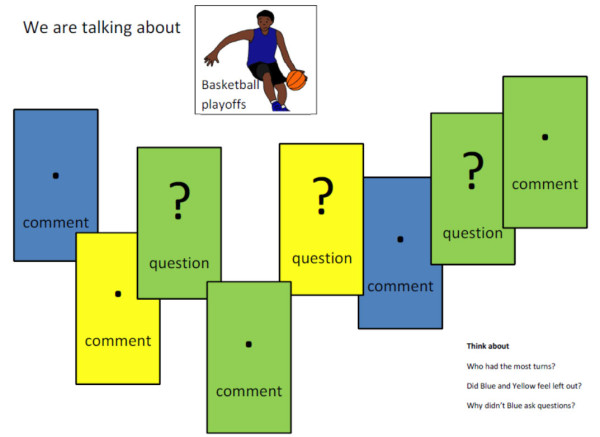
Wait time
Too much cannot be said about wait time. It is a very difficult skill to teach to children, but it’s a tough thing for many adults to accept as well. Encourage your AAC communicators to develop a signal that lets everyone know when they need more time to formulate their messages. That can be as simple as a hand gesture or a prestored message such as “Give me a sec!” If children have difficulty waiting their turn to speak, try passing around a visual to remind the group whose turn it is to speak. This can be as simple as a ball or a stuffed animal. Giving the speaker a visual reminder for the other conversation partners to wait quietly, however, is very empowering (see sample)!
Modeling by adults and peers is critical when teaching conversation skills. Video self-modeling can be utilized to help students watch their own successes over and over again.
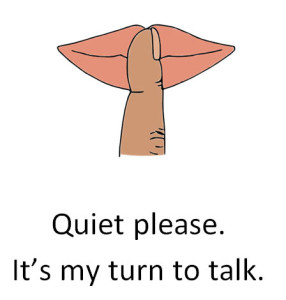
You can download Tina’s packet of visual support materials here or visit the AAC eToolbox, Download section.
:::::::::::::::::::::::::::::::::::::::::::::::::::::::::::::::::::::::::
Tina Moreno is a speech-language pathologist with a love of AAC. She worked with children with complex communication needs in the school setting for five years and is now working in an outpatient hospital setting where she introduces many of her patients to low tech and high tech voices. She is inspired every day by her 15-year old son, Mateo, who has been communicating with a Dynavox since the age of 4. She is also co-director of Camp ALEC, a week-long, residential literacy camp for children who communicate with AAC due to physical disabilities. Camp ALEC, with experts Drs. Karen Erickson and David Koppenhaver, will be offered August 9-15 at Indian Trails Camp in Grand Rapids, Michigan. Families can find more information about Camp ALEC or apply by visiting www.campalec.wordpress.com.
Filed under: PrAACtical Thinking
Tagged With: classroom, Tina Moreno
This post was written by Carole Zangari

